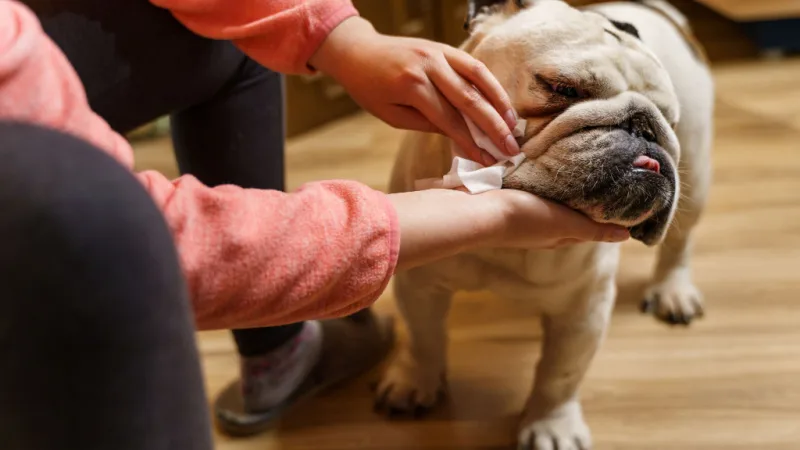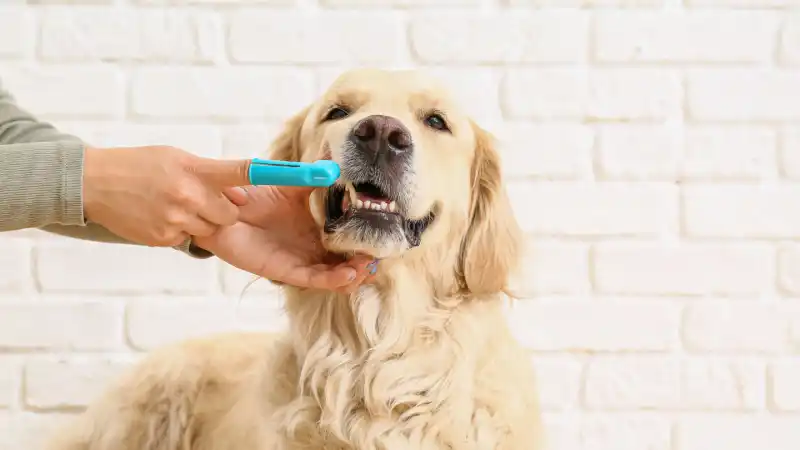How Much Exercise Does a Senior Dog Need?
There's no right amount of exercise for a senior dog, but there are a few things to keep in mind, including how much your pet can actually handle.

The senior years can be really tricky for dog owners, and it can be difficult to know exactly what the “right thing” to do is when it comes to their exercise regimen. The truth is, there is no one “right thing” when it comes to exercise for senior dogs. Each dog ages differently and it’s not easy to know how much exercise is enough… or how much is too much. But there are some guidelines you can follow so that you can work toward a balance of exercise that is “just right” for your aging friend.
Pain Can Inhibit Your Senior Dog’s Activity and Quality of Life
The first thing to get out of the way is to figure out if your senior dog is experiencing any pain or if they are just slowing down due to the normal aging process. There are some obvious signs such as limping or difficulty getting up and down, but there are also subtle signs that you should be aware of that indicate pain.
These include:
Lagging during walks
Not wanting to use stairs
Not wanting to do things they used to enjoy (such as playing with their favorite toy)
Appearing apathetic or disinterested in getting off of their bed
Shifting positions frequently when sitting or lying down
Not sleeping through the night
Drinking more water
Not wanting to eat
If your dog is experiencing any of these symptoms, or you think they may be in pain, it is important to visit your primary care veterinarian before changing anything with their exercise regimen. If your dog is in pain, increased exercise may exacerbate the problem and they may need pain control medications prescribed by your veterinarian in order to maintain comfort and a reasonable level of activity.
The Benefits of Exercise for Senior Dogs
As long as your senior dog is not showing signs of pain, it is beneficial for them to exercise daily. Movement helps to keep the muscles strong, the ligaments and tendons limber, and the joints lubricated. Without movement, the musculoskeletal system begins to deteriorate. Even if your senior dog is slower than they used to be or seems stiff, it is important to get them up and walking so that they do not become weaker and more stagnant. But, how do you know what type and how much exercise they should engage in?
Types of Exercise for Senior Dogs
I’m a veterinarian and when I’m coaching my clients on how to exercise their senior dogs, I explain that there are 2 types of exercise that are important for quality of life and everyday health. I refer to the first type as “focused” exercise and the second type as “explorative” exercise.
Focused Exercise
An example of focused exercise is going for a sustained walk of 15-20 minutes (or whatever time period your senior dog is used to and does not cause pain). Speed doesn’t matter and will change as your dog ages; the important thing is that the movement is continuous.
Explorative Exercise
An example of explorative exercise is taking your dog out, but allowing them to stop and sniff, look around, or interact with other dogs. Both types of exercise are important, and I recommend including one of each outing on a daily basis.
Go At Your Dog's Pace
For senior dogs, walking on flat surfaces with good traction is typically the safest and most beneficial type of activity. I’ve met some pretty amazing seniors, some who can still run, participate in agility, or hike several miles. But, for the average senior dog, walking on a daily basis will keep their musculoskeletal system “tuned up” without the high impact that can wear on their aging joints. If your senior dog has already been diagnosed with arthritis, it is especially important not to include too much high impact activity in their exercise routine. The impact can cause pain (even if your dog doesn’t show it) and speed up the process of aging by contributing to the development of more arthritis. The good news is that even dogs with arthritis can do really well for a long time if they continue low impact walks on a daily basis. Plus, it adds to their happiness and general quality of life!
Enhancing Your Senior Dog’s Exercise Routine
If you think that your senior dog is not getting enough exercise to stay physically healthy and young at heart, you can try gradually increasing the minutes that they exercise per day. Measuring senior dog exercise in minutes makes a lot more sense than distance because as they age, they will likely slow down. This means they won’t be able to cover the same amount of distance in the same amount of time as when they were younger. But most senior dogs will be able to maintain the same number of minutes of exercise per day, or close to it, if you don’t worry about the speed or distance.
When attempting to increase your senior dog’s exercise, try doing it in 5-minute intervals per day. For example, if your dog currently walks 15 minutes per day, try going up to 20 minutes for a couple of days. As long as they don’t show any signs of pain, you can increase it to 25 minutes, and so on. If they do show symptoms of pain, rest them for one day and go back to the last interval that was comfortable for them. If signs of pain linger, it’s probably time to see your veterinarian to get an expert opinion on the status of your senior dog’s joints and the appropriate amount of exercise based on their specific needs.
The senior years really can be some of the best years for you and your canine friend. Keeping up with annual visits and preventive care can help ensure that your senior dog gets what they need to live the healthiest, happiest life possible. At home, keeping up with an exercise routine that works for them at various stages of the aging process is something you can do to give your dog their best senior life.
Preparing for your dog’s golden years in advance with Hereditary add-on coverage* from AKC Pet Insurance (underwritten by Independence American Insurance Company) is another great way to keep them happy and healthy. Create a unique plan for your pet by clicking here for a quote.
*Available at an additional cost and subject to a 30-day waiting period.
Nell Ostermeier is an Integrative Veterinarian, Motivator, Lecturer, and Consultant.
READ MORE ARTICLES

